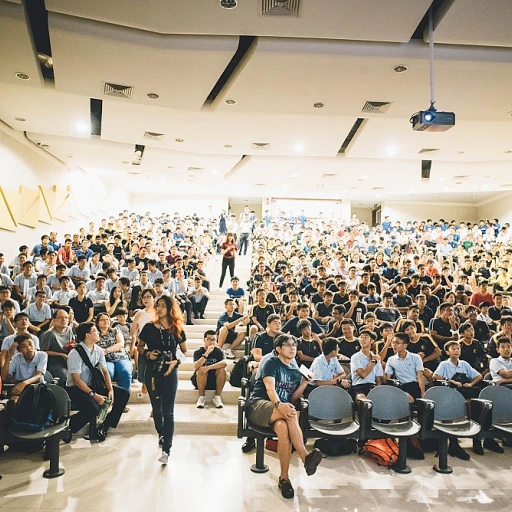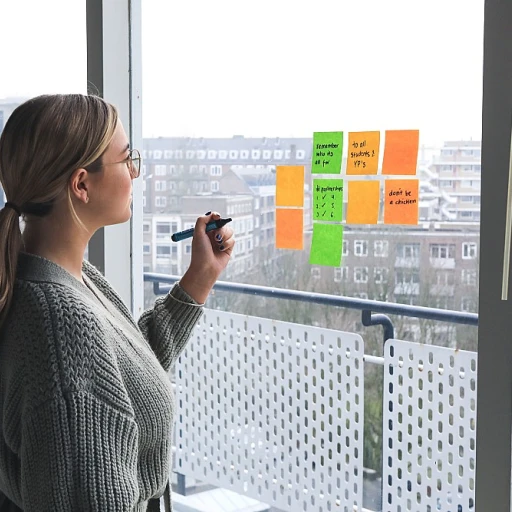
The Role of AI in Remote Employee Monitoring
AI's Evolving Role in Ensuring Remote Workforce Productivity and Security
The rise of remote work has brought with it a necessity for efficient employee monitoring and data security solutions. Artificial intelligence plays a pivotal role in this, offering advanced tools and technologies designed to maintain productive work environments while safeguarding sensitive information. However, the challenge lies in striking a balance between effective monitoring and respecting employee privacy.
AI tools come equipped with capabilities to monitor employees without being intrusive, such as assessing productivity metrics and detecting anomalies in work patterns that could indicate potential security risks. By analyzing data patterns, these tools can identify potential data leaks or unauthorized access to sensitive data, thus enhancing security measures in real-time.
The implementation of AI in remote employee monitoring not only optimizes work efficiency but also aids in the prevention of data loss and breach. As technology continues to evolve, AI remains essential in developing systems that ensure both efficient work practices and robust data protection protocols.
Balancing Privacy and Security in Remote Work
Achieving a Balance Between Privacy and Security Measures
In the rapidly evolving landscape of remote work, ensuring a perfect equilibrium between privacy and security is crucial. Organizations have increasingly turned to advanced AI-driven monitoring tools to safeguard sensitive data while respecting employee privacy. As businesses adopt these monitoring software solutions, understanding the importance of this balance cannot be overstated. AI's potential to enhance security in remote work scenarios is immense, but it must be implemented thoughtfully. Employee tracking through AI offers increased awareness of productivity and security risks, enabling businesses to better prevent data leaks and data loss. However, it's essential to ensure that these tracking methods do not infringe upon the personal privacy of remote employees. Employers need to implement security measures that monitor remote activity to prevent data breaches and maintain data security. The challenge lies in applying these measures without crossing the line into invasive monitoring techniques that make employees uncomfortable. One critical consideration is being transparent with employees by clearly communicating how their activities are being monitored and what data is being collected. It's beneficial to integrate privacy-by-design principles into AI solutions, ensuring they inherently uphold privacy standards. Furthermore, organizations can establish policies that protect employee privacy, such as restricting access to personal data, minimizing data collection to only what's necessary for security, and utilizing anonymized or aggregated data whenever possible. To enhance this crucial balance, leveraging HR document management software can be a valuable resource. These tools not only improve security protocols but also streamline the management of sensitive data, reinforcing both security and privacy across HR and operational functions. Keeping these principles in mind will enable organizations to foster a work environment where remote employees feel secure and respected, ultimately enhancing their productivity and trust.AI Tools for Data Leak Prevention
AI-Powered Methods for Preventing Data Leakages
In today’s landscape of remote work, safeguarding sensitive data has become increasingly critical. The shift towards working away from traditional office environments has introduced new security challenges and amplified the need for robust leak prevention mechanisms. AI tools present valuable solutions for mitigating risks associated with data leaks and enhancing the overall security posture in remote work settings. These advanced software solutions boast a variety of features, addressing everything from employee tracking to data protection, ensuring a comprehensive approach to safeguarding sensitive information.- Data Access Control: AI-driven tools allow for real-time monitoring and alerting when unauthorized access occurs, thus helping to prevent potential data leaks before they happen. This is key in environments where sensitive data is involved, and strict access control is necessary.
- Automated Anomaly Detection: By deploying AI algorithms, organizations can effectively monitor employee activity for unusual patterns or behaviors, signaling a potential data leak or breach. These algorithms can discern between normal work routines and anomalies that may suggest malicious activities, providing an extra layer of security.
- Predictive Analytics for Leak Prevention: AI's predictive capabilities enable organizations to foresee potential data loss scenarios by analyzing workloads and employee interactions in-depth. This proactive approach is invaluable in forecasting and mitigating potential data breaches.
- Secure Communication Tools: AI-based solutions facilitate secure communication among employees working remotely. They integrate features that ensure data leaks are minimized during exchanges of information, thereby enhancing employee privacy.
Case Studies: Successful Implementation of AI in Remote Work
Real-world Success Stories of AI in Remote Employee Monitoring
In recent years, companies have begun to embrace AI solutions as a way to monitor remote employees more efficiently while safeguarding data. Below are some case studies showcasing the successful deployment of AI in improving data protection and employee productivity.Company A: Enhanced Data Security Measures
Company A, a global IT services provider, implemented AI-driven monitoring software to ensure that remote employees adhere to data security protocols. This software enabled real-time tracking of access to sensitive data, helping to prevent data breaches and unauthorized data leaks. The deployment of AI tools also reduced incidents of data loss by 30%. As a result, Company A enhanced its data security, safeguarding both personal and client information.Company B: Balancing Privacy with Monitoring
To address privacy concerns, Company B, a large marketing firm, integrated AI tools that offer both productivity tracking and privacy protection for remote employees. By allowing employees to have control over their data and its use, Company B was able to foster trust while maintaining effective monitoring. This approach not only improved employee satisfaction but also led to a 20% increase in productivity, demonstrating that privacy and security can coexist in a remote work environment.Company C: Proactive Data Leak Prevention
A high-tech enterprise, Company C, successfully incorporated AI-based software for proactive data leak prevention. The tools deployed could analyze user behavior and automatically flag any abnormal activities that could result in potential data breaches. By implementing such sophisticated monitoring measures, Company C cut down on security risks significantly, promoting a safer working environment for their remote workforce. These case studies illustrate that when companies strategically apply AI for remote work security, balancing between employee tracking and privacy, they can achieve remarkable improvements both in data protection and overall productivity.Future Trends in AI for Remote Work Security
Emerging Technologies in AI for Remote Work Security
The landscape of remote work is continuously evolving, and with it, the technologies designed to secure this environment are advancing at a rapid pace. As organizations strive to protect sensitive data and maintain employee privacy, several emerging trends in AI are set to redefine how we approach security in remote work settings.
AI-Driven Behavioral Analytics
One of the most promising trends is the use of AI-driven behavioral analytics. These tools monitor employee activities to identify unusual patterns that may indicate security risks or potential data leaks. By analyzing how employees interact with data and systems, AI can provide real-time alerts for suspicious activities, enhancing both data protection and employee monitoring efforts.
Advanced Data Loss Prevention (DLP) Solutions
Data loss prevention tools are becoming more sophisticated, leveraging AI to predict and prevent data breaches before they occur. These solutions can automatically classify sensitive data and apply appropriate security measures, reducing the risk of data leaks. As remote work continues to grow, the integration of AI in DLP solutions will be crucial for safeguarding sensitive information.
Privacy-First Monitoring Tools
Balancing privacy and security remains a top priority. AI-powered monitoring tools are increasingly focusing on privacy-first approaches, ensuring that employee tracking does not infringe on personal privacy. These tools are designed to monitor remote employees' productivity and security without accessing personal data, thus maintaining a respectful balance between monitoring and privacy.
AI in Identity and Access Management
Identity and access management (IAM) is another area where AI is making significant strides. AI can enhance IAM systems by providing dynamic access controls based on real-time risk assessments. This ensures that only authorized personnel have access to sensitive data, reducing the likelihood of unauthorized data access and potential breaches.
Integration with Existing Security Measures
Finally, the integration of AI with existing security measures is becoming more seamless. Organizations are increasingly adopting AI tools that can work alongside traditional security software, providing a multi-layered approach to data protection and employee monitoring. This integration not only enhances security but also improves overall productivity by allowing employees to work securely from any location.
Best Practices for Implementing AI in Remote Work
Implementing AI with a Focus on Employee Privacy
When integrating AI into remote work environments, it's crucial to prioritize employee privacy. AI tools can be powerful allies in monitoring remote work and preventing data leaks, but they must be used responsibly. Start by clearly communicating to employees how monitoring software will be used and what data will be collected. Transparency helps build trust and ensures that employees understand the security measures in place.
Choosing the Right AI Tools for Your Needs
Selecting the appropriate AI tools is essential for effective remote employee monitoring and data protection. Consider tools that offer robust data leak prevention features while respecting employee privacy. Evaluate software based on its ability to monitor remote work without being overly intrusive. Look for solutions that provide real-time tracking and alerts for potential data breaches, ensuring that sensitive data remains secure.
Training and Support for Seamless Integration
Successful implementation of AI in remote work requires comprehensive training for both IT staff and employees. Provide training sessions that cover the functionalities of the monitoring software and emphasize the importance of data security. Continuous support and updates are also vital to address any issues that may arise and to adapt to evolving security risks.
Regularly Reviewing and Updating Security Protocols
AI tools and security measures should not be static. Regularly review and update your security protocols to adapt to new threats and technological advancements. This proactive approach helps in maintaining a secure remote work environment and ensures that your data protection strategies remain effective.
Balancing Productivity and Security
While AI can significantly enhance productivity by monitoring remote employees, it's important to strike a balance between productivity and security. Avoid excessive monitoring that could infringe on employee privacy and instead focus on tools that enhance productivity without compromising personal data. Encourage a culture of trust where employees feel valued and secure.












